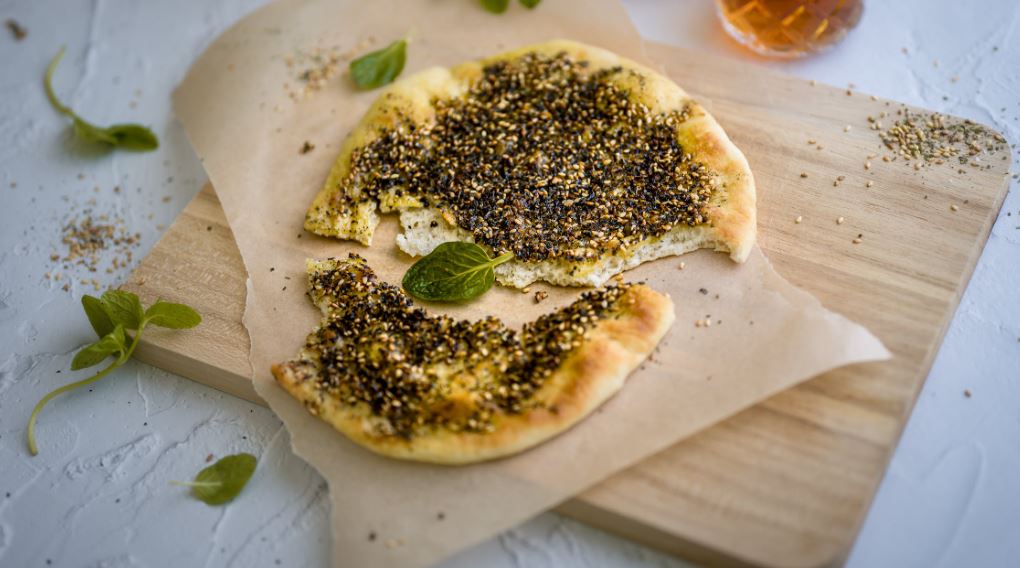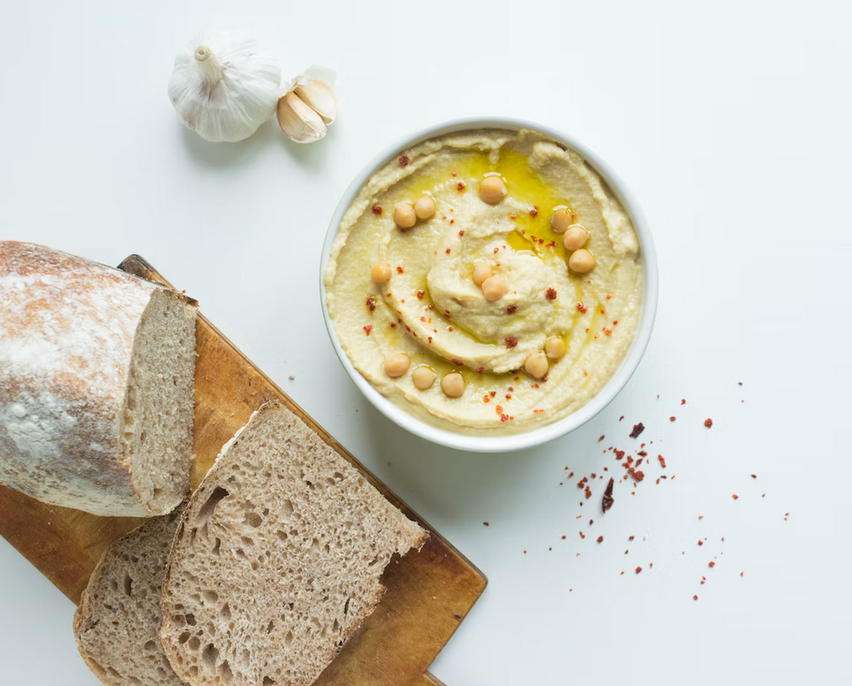10 Delightful Jordanian Foods To Try

There’s a quote in Jordan and the Middle East that says something along the lines of:
“Even when you’re full, you can still always eat 40 more bites of food.”
And I believe it’s not nearly as shallow as just eating until you are stuffed, and then eating some more. But it’s rather a clear reflection on the importance of generosity and hospitality and the significance of food in the Jordanian culture (but let’s not get too deep here… it is about eating a lot of food too)!
What is Jordanian food?
Jordan, due to its geographical location in the Levant, has culinary influences from North Africa, the Middle East, Persia, and the Mediterranean. So while technically ful medames might be originally from Egypt, it is also extremely common and popular locally in Jordan as well.
So I just want to warn you – this list of Jordanian foods, might not be every dish that originates or was discovered in Jordan, but it’s a list of food that you’ll find commonly throughout Jordan. Bread, rice, lamb, olives and olive oil, za’atar, yogurt, tahini, garlic, onions, pickles, sage, and mint, are just a few of the distinct tastes and ingredients you’ll experience eating in Jordan. If you’re a food lover, this is a list of food you’ve got to try when you’re in Jordan.
Moutabel
Before going to Jordan I always thought of baba ghanoush when I thought of a Middle Eastern roasted eggplant dip – and I loved it. But when I was in Jordan, I discovered that while baba ghanoush is available, by far the more common roasted eggplant dip available is moutabel, which is similar to baba ghanoush, but quite different. One of the main ingredient differences is that moutabel uses yogurt in its recipe.
I’ve always loved eggplant in all its forms, especially when it’s roasted over the fire, to give it a wonderful smoky taste and a smooth and creamy consistency. For moutabel, the roasted and peeled eggplant is combined with yogurt, tahini, garlic, and lemon juice.
Where: Hashem Restaurant serves an excellent bowl of moutabel.
Address: Complex No 4, Prince Mohammad St 4, Amman.
Fattet Hummus

I had eaten plenty of hummus before ever visiting Jordan (granted some of the best hummus I ever tried was in Jordan), but I had never even heard of fattet hummus before going to Jordan. Fattet hummus is a combination of bread, which has been soaked in broth to make it completely dissolvable, mixed with hummus, tahini, and lemon juice. Most of the versions of fattet hummus I had in Jordan included regular white bread in the recipe, but you can also make it with pita type of bread.
Fattet hummus is a complete twist on regular hummus. While it has that similar garbanzo bean taste, with a hint of lemon juice and olive oil, the texture is totally different – it kind of feels like whipped hummus. It’s fluffy and airy like whipped cream, not nearly as dense or thick as regular hummus.
Where: In Amman, try the fattet hummus at Al Osrah Restaurant. Located in the Abdoun neighborhood of Amman; Open hours: about 10 am – 11 pm daily
Labneh
Labneh, which is also known as strained yogurt, is a very thick, creamy yogurt, that’s served at just about every breakfast table in Jordan. It’s not typically eaten like a bowl of yogurt because it’s so rich, but instead, it’s used as a spread for bread or a dip for vegetables. The taste is sour and creamy, but usually not salty, very similar to sour cream.
Labneh can be served in a bowl plain, or drizzled with olive oil, or combined with different herbs or leaves to give it more flavor. I particularly enjoyed some versions of labneh that included local herbs. I’m not sure of the name of the herb, but there was one I tried that had a mild horseradish taste, which went very well with the sour creamy labneh.
Where: If you visit Amman, Shams El Balad Cafe serves delicious labneh with seasonal herbs. Address: 69 Mu’Ath Bin Jabal Street, Amman; Open hours: 8 am – 10 pm daily.
Galayet Bandora
One of the other common dishes I ate frequently in Jordan was galayet bandora, also known just as galayet. This dish includes tomatoes that are stewed until soft and pureed, with a few seasonings like garlic, olive oil, and salt. The tartness and sweetness of the tomatoes are what really shines, and it tastes great scooped up with bread ore eaten with rice.
While I was at Wadi Rum I also had a type of galayet with meat, so it was chunky tomato sauce with cubes of beef, eaten with rice. It was really good, like a Jordanian tasting spaghetti sauce with cubes of meat and rice.
Ful Medames
When I visited Egypt, ful medames on the streets of Cairo were my go-to street food – I enjoyed ful immensely. And while ful medames might be originally from Egypt, this dish of mashed fava beans and olive oil is also widely available and commonly eaten throughout Jordan. You’ll find ful at most restaurants that serve hummus and falafel.
My favorite way to eat ful is sprinkled with some powdered cumin and chili powder, drizzled in olive oil, and scooped up with either bite of bread or with wedges of onion. The fava beans taste very similar to Mexican refried beans. When I was in Jordan I loved eating ful medames for breakfast, along with some hummus and fresh raw vegetables.
Where: Al Osrah Restaurant in the Abdoun neighborhood of Amman.
Manakish
Sometimes called Arabic pizza, and spelled in all sorts of different letter combinations (manakish, manaeesh), manakish is essentially a round of dough, topped with za’atar (an herb thyme spice mixture), olive oil, and can then optionally include toppings like white cheese (halloumi), eggs, or ground meat. It’s then baked in a brick oven.
When manakish is hot and fresh, right out of the oven, it’s incredibly delicious – the crusty bread with a fluffy inside, and that wonderful herb taste. I liked manakish especially just plain with za’atar, and I also really enjoyed the version with white cheese (halloumi cheese).
Where: The best manakish I had in Amman, was down one of the side streets from Paris Circle, on Niqola Ghanma Street, at a small hole in the wall family-run bakery.
Kaek Bread Sandwich
One of the most popular Jordanian street food snacks, especially common in the morning, is a kaek bread sandwich. The bread, which is in the shape of a mini personal loaf, is topped in a crust of sesame seeds and can be filled with Happy Cow like triangles of cheese, hard-baked eggs, za’atar, and chili sauce. It’s simple, tasty, and very common.

Kaek sandwiches taste the best when they are piping hot – when the bread is cooked fresh. If you visit Amman, there’s a legendary bakery, known as Salaheddin Bakery (مخبز صلاح الدين), which is not only one of the oldest bakeries in Amman, but it serves one of the best sesame bread sandwiches in the city. Grab a fresh loaf, add all the toppings yourself, and take a bite of one of the most incredible loaves of kaek in Jordan.
Where: Salaheddin Bakery is located at the crossroad of King Al-Husseim Street and Umayah Bin Abd Shams Street.
Ara’yes
If you didn’t know that ara’yes was grilled, you might actually think it’s deep-fried, because it’s so crispy. At least that’s what happened when I tried it for the first time. Ara’yes, which translates directly to the bride, is essentially two layers of pita bread, filled in the middle with minced lamb, onions, parsley, and with a fragrant allspice seasoning.
The quesadilla shaped ara’yes is then brushed with olive oil and grilled over hot charcoal so that it turns golden brown and crispy on the outside. The combination of that roasted olive oil bread and the oil of the minced lamb seeping into the bread makes it irresistible.
Where: Ara’yes is commonly available at Jordanian food restaurants that serve grilled meat like shish kebabs or as Jordanian street food.
Kofta Bi Tahini
Kind of similar to shish kebabs, just in a completely different form, kofta bi tahini is a dish that includes a bottom base layer of minced kebab (or kofta) meat, flattened out into a patty, topped with thin slices of potato, doused in a thick tahini sauce, and then baked.
The meat on the bottom is like a base of sausage, that wonderful parsley flavored minced meat. If I didn’t know the white thick sauce all over kofta bi tahini was tahini, I might think it was some kind of milk-based cream white gravy because it was so rich and creamy. But instead, it had a slightly nutty taste, and it wasn’t nearly as heavy as a dairy-based sauce.
Where: In Amman, Sufra Restaurant serves an excellent version of Kofta Bi Tahini. Address: Al Rainbow St 26, Amman 11181;
Musakhan
Musakhan is a Jordanian and Palestinian dish of slices of bread, chicken, heaps of onions, fragrant spices like allspice and cinnamon, and lots of olive oil. The ingredients are stewed together until the onion, chicken, olives, and bread are fall-apart tender and the spices have blended and harmonized. While the spices have a sweet tinge to them, the actual dish is not sweet.
What I couldn’t’ get over while trying musakhan for the first time were the onions. They were fall-apart tender, they dissolved upon taking a bite, and they were just filled with olive oil and that wonderful sweet dry spice mixture.
Where: I tried this dish for the first time at a hotel, and didn’t have a chance to try a better version at a restaurant – though I would have loved to. Do you have any recommendations?
Due to its central geographical location, within the Levant, but surrounded by North Africa, the Middle East, and the Mediterranean, the food you’ll enjoy is a fascinating mix of cultures and civilizations.
When you’re in Jordan you can enjoy platters of fresh bread, spiced rice, and hunks of fall apart tender lamb, but at the same time, you can enjoy deliciously refreshing dishes like Arabic salad, tabbouleh, and restaurants that will serve you all you can eat raw vegetables, and creamy plates of hummus.
Food is such an integral part of Jordanian culture, and when you start eating, you’re almost certain to meet and mingle with some of the most hospitable and friendly people you’ve ever met.
Need help planning your next trip? The Trip Atelier takes the stress out of vacation planning. Schedule a consultation and start crafting a memorable vacation today.






